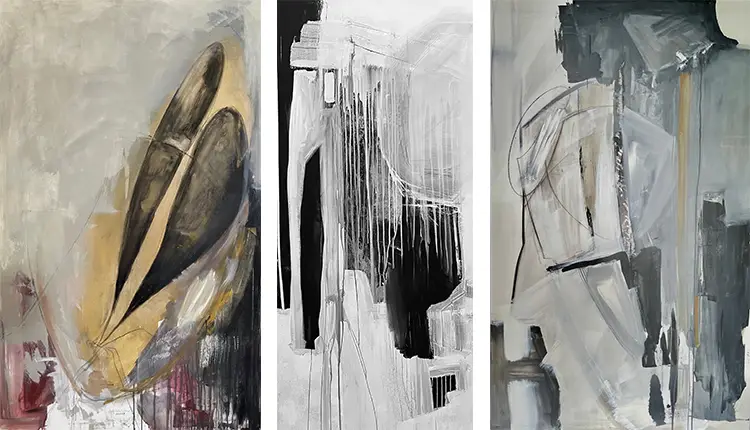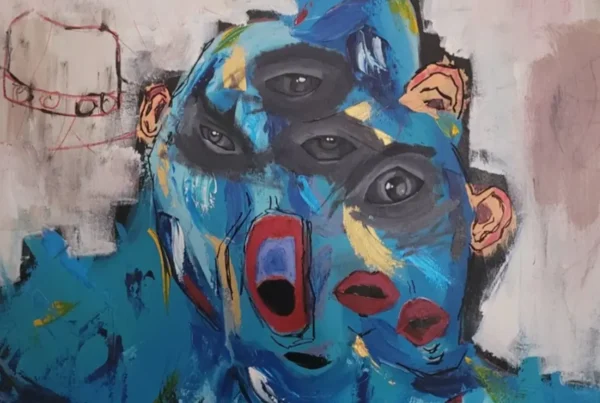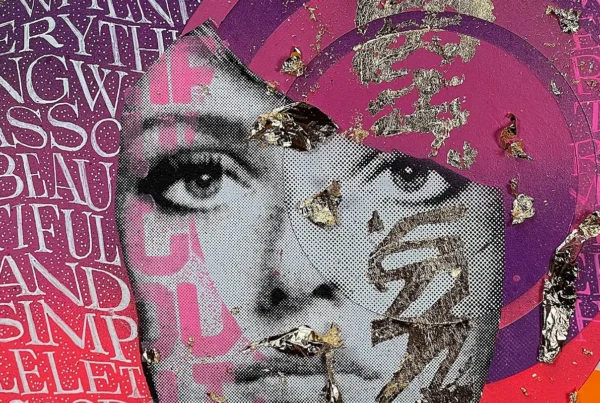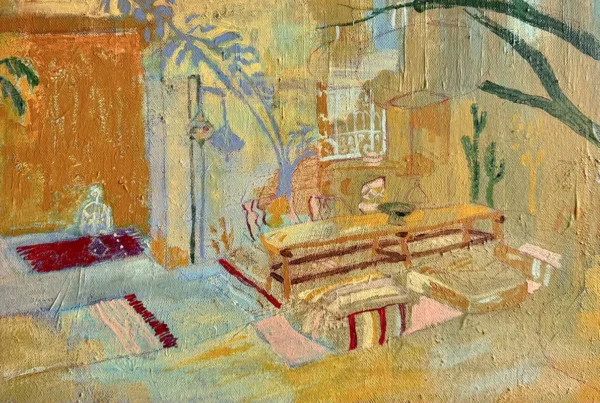“I aim to spread optimism, bright emotions, and warmth — to remind people of lightness, sincerity, and the ability to simply be.”
Rooted in the Rhythms of Nature
Aima Sodonienė, who presents her work to the world under the name AIMART, stands as a distinctive voice in contemporary Lithuanian art. Her artistic journey is deeply intertwined with the landscapes and emotional textures of her homeland, where the full cycle of seasons brings an ever-shifting palette of colors, moods, and sensations. Each phase of nature’s rhythm offers her a source of inspiration, shaping not only the aesthetic quality of her work but also the emotional atmosphere she seeks to convey. In a social environment often marked by political unease and collective anxiety, Sodonienė responds through her art with an intentional offering of warmth, brightness, and hope. Her creations act as gentle reminders of joy, sincerity, and the freedom to simply exist and appreciate life’s quiet moments.
The artist’s choice to focus on optimism and emotional uplift is not merely stylistic but also philosophical. She perceives art as a counterbalance to societal tension, a means to foster spaces of lightness in contrast to the darker shades of human experience. Rather than replicating reality through literal depiction, her work invites reflection and introspection, encouraging viewers to find their own interpretations within the abstract forms and vibrant colors. This approach reflects her belief in the transformative power of visual language—a belief rooted in both personal experience and a deep sensitivity to the emotional climate around her.
Although Sodonienė did not immediately immerse herself in painting after completing her academic studies, her creative instincts remained close to the surface, always intertwined with pursuits centered on beauty and color. Life’s winding path eventually led her back to the canvas, where painting evolved from a quiet passion into her central life’s work. The gradual yet inevitable return to this artistic calling speaks to a sense of authenticity in her practice—an alignment between inner purpose and outward expression that now defines her artistic identity.

Aima Sodonienė: Freedom Through Color and Form
At the heart of Sodonienė’s artistic language lies abstraction, a style that allows her to transcend representational confines and focus instead on emotional resonance. Her work thrives on the interplay between color harmonies, the fluid dynamics of lines, and the tactile energy of textures. By sidestepping literal representation, she creates open spaces within her compositions where viewers are free to bring their own meanings and associations. This intentional ambiguity enhances the emotional accessibility of her work, making each piece not only a personal statement but also an invitation for dialogue with the audience.
Her thematic explorations are as diverse as the techniques she employs, yet they remain unified by an underlying commitment to evoking feeling rather than dictating narrative. Using a range of materials—from acrylics, chosen for their soft matte quality and lack of strong odor, to the expressive strokes of charcoal and even the earthy textures of clay plaster—she shapes each piece through both instinct and deliberate construction. These material choices are as much about the sensory experience of creating as they are about the finished work itself, reflecting her desire to maintain spontaneity and emotional immediacy throughout her process.
Sodonienė’s workspace reflects her need for solitude and focus, essential elements for channeling the intense emotional energy that fuels her creativity. The right atmosphere, shaped by music and natural light, provides the setting in which her artistic impulses can fully unfold. Once absorbed in the act of painting, she disconnects from the distractions of digital life, choosing to remain present with the work rather than sharing its evolution in real-time. This approach preserves the integrity of her creative process, allowing the final artwork to speak for itself without the interruption of external noise.
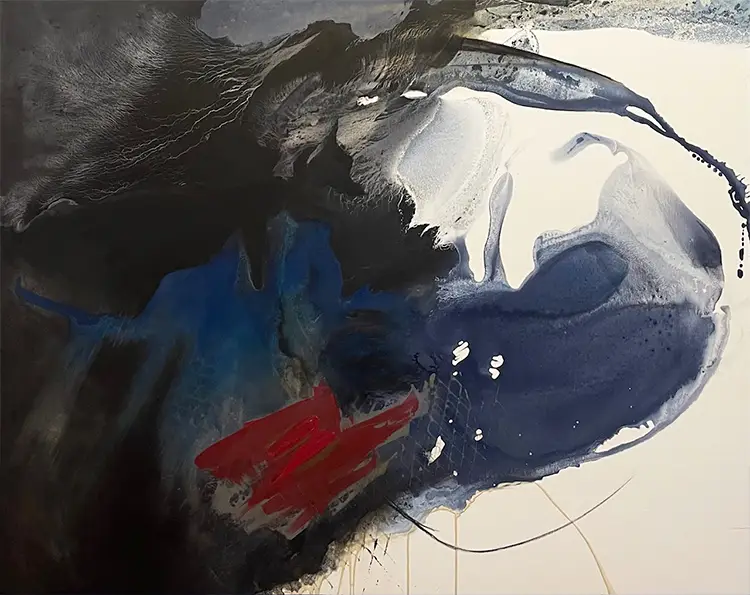
Echoes of Influence and Inner Freedom
The impact of Joan Miró on Sodonienė’s artistic development is both profound and enduring. The bold colors, liberated forms, and expressive abstraction found in Miró’s work left an early imprint on her imagination during her school years—a connection that continues to shape her aesthetic sensibility. What resonates most deeply with her is not only Miró’s visual style but also his philosophy of spontaneity and emotional authenticity. Like Miró, she seeks to touch the viewer on an internal level, bypassing literal storytelling in favor of visceral engagement.
In addition to Miró, Sodonienė finds kinship in the works of Le Corbusier, whose creative approach further enriches her appreciation for structure and form. While her own compositions remain firmly rooted in abstraction, the influence of these two artists underscores her attention to balance, space, and the emotional potential of design. Their legacies inform her commitment to freedom within form—allowing her to explore relationships between shapes, lines, and colors without being confined by traditional expectations.
This sense of artistic freedom is not without its physical and emotional demands. Sodonienė describes the process of painting as one that requires her full energy, often leaving her physically exhausted after long sessions at the canvas. Yet this exhaustion is part of the creative cycle she embraces—the necessary outpouring of stored emotional energy into visual form. Through this intense process, her works become more than images; they become vessels of feeling, charged with the spontaneity and sincerity that she so deeply values.
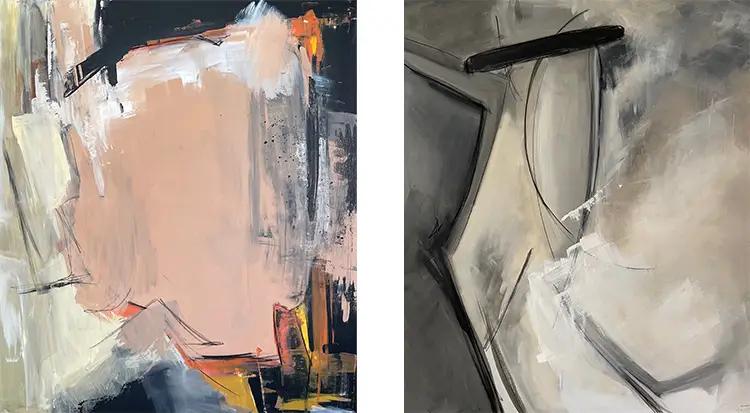
Aima Sodonienė: The Stories Paintings Carry
Among Sodonienė’s body of work, one painting in particular holds profound personal significance. Created during the global lockdown period, this piece, titled “Take a Breath”, became a sanctuary for her own emotional strength during a time of widespread uncertainty. Conceived initially as a private work with no intention of being sold, the painting was a deeply personal reflection of resilience and self-reassurance. Its significance grew further when it was selected for exhibition in Venice, marking a moment where personal healing and artistic recognition intersected.
The journey of “Take a Breath” did not end at the exhibition. Instead of returning to the artist’s studio, the painting found its way into the hands of someone else who, according to Sodonienė, needed its energy just as much as she once did. This transfer of emotional power from artist to viewer illustrates her core philosophy: that art serves not only as expression but also as connection. The painting’s migration beyond her personal sphere mirrors the broader intention behind all her work—to offer spaces of solace, strength, and contemplation to others.
Sodonienė’s chosen mediums further support this intimate exchange between creator and audience. Acrylics provide the gentle matte surfaces she prefers, while charcoal introduces vivid, expressive lines that add intensity and movement to her pieces. Occasionally, she incorporates textured materials like clay plaster, adding another sensory dimension to her work. These choices are not arbitrary but arise from her deep sensitivity to how materials influence both the creation process and the viewer’s emotional experience.
Although she holds dreams for future projects, Sodonienė remains intentionally silent about unrealized ideas. Instead, she focuses on sharing the works that have already come into being, preferring not to speak about concepts that have yet to materialize. This philosophy aligns with her overall approach to artmaking—anchored in presence, honesty, and the belief that the true meaning of a piece unfolds through its existence and the connections it fosters once it steps out into the world.
